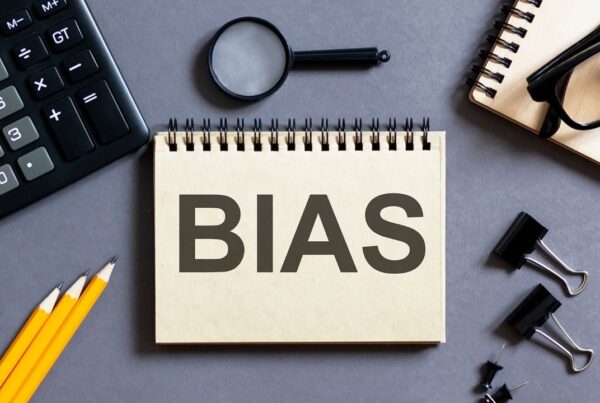Strategy, technology, or even logic.
Psychology trumps them all. And when I say “psychology” I mean street-level psychology like you see practiced by grifters, hustlers etc.
Psychology professor and best-selling author Robert Cialdini calls these kind of people “compliance professionals.” And he includes sales people and magicians in the group.
In his book, Influence, The Psychology of Persuasion, Cialdini writes about six powerful tactics that compliance professionals all use to effectively and routinely manipulate people in all ranks of life.
It’s a book that can quite literally change your life, if you make use of the principles he discusses.
Over 1,700 people have reviewed the book on Amazon, and 88% of the reviewers give it 4 or 5 stars. This 5-star review gives a nice summary of the six principles, but I really recommend you read the book in its entirety.
Why? Because, if you’re like me (and apparently this how most people tend to be), you have this tendency to assume the world operates more on rationality than is actually the case.
And when I say “assume” I don’t mean in an intellectual sense. I mean in a “how you reflexively think and decide” sense.
A 100% True Story
Let me tell you about my awakening to the raw truth of how unconscious thoughts and feelings actually drive decisions more than we tend to be aware of.
When I first went to work at the big firm back in 1987 one of the partners was handling a brain injury case on the plaintiff side. This was unusual because the firm didn’t handle personal injury matters for plaintiffs or defendants.
But the parents of the injured victim asked the partner to handle the case, and since it was a case of clear liability with extensive damages he agreed.
The victim, a young man in his twenties, was injured when the car he was driving was hit by a delivery truck owned by a local company. The insurance company refused early offers to settle the case, and so a trial was imminent.
Since the partner had no experience with personal injury cases he decided to invest in doing some mock trials. In the first round of mock trials there were three sets of representative juries who deliberated separately.
The first two juries came out with the same verdict range: about 1.5 million dollars. But the third jury awarded 4.2 million.
In reviewing the video tapes of the deliberations it became clear that the third jury had fixated on something that no one had given much thought to. Namely, the difference in size between the victim’s car and the delivery truck.
One of the jurors expressed the notion that “the bigger the vehicle the more responsibility it has to be careful.”
Now this is common sense when you stop and think about it. Or at least it is for many people who think about it.
But wasn’t a principle that the partner handling the case had focused on, because he was thinking exclusively at a logical level.
Anyway, having become aware of this idea of bigger means more responsible, he decided to do another mock trial with another set of three juries.
And this time he spent more time drawing attention to the size differential. The verdicts this time were all above the 4 million mark, with one jury coming in at 5.6 million.
The partner went to the insurance company and flat out told them what they’d discovered about the value of the case. The case settled for $4.2 million dollars.
Everyone got big bonuses based on how long they’d been with the firm. My bonus was paltry because I’d only been there a few weeks when the case settled.
But I was rewarded big time by being exposed to how subtle, often unobserved human tendencies can have a powerful impact in how important decisions are made.
I didn’t discover Cialdini’s book until many years later, but when I found it I knew it was a powerful tool.
After finding that book I went looking for other books that offered no-holds-barred practical advice on tactical persuasion.
I found a few savvy “compliance professionals” recommending this book by fellow named Blair Warren. That book was indeed a gem, but he had written another book (which wasn’t on Amazon or anywhere else that was easy to find) that was even BETTER.
That book was called Forbidden Keys to Persuasion. It was created for an online course that Warren taught once. He apparently had been selling the book online as part of the course for $97 but then he stopped selling it in any public way.
But I was determined to track it down so I did some online sleuthing, and…
I found this hidden page on his website that offered the book in PDF form for $20, so I bought it.
And let me tell you, that book is one of the BEST books on persuasion I’ve ever come across. For example…
Here are 3 human tendencies (discussed on pages 30 & 31 of the Forbidden Keys book) that govern all scenarios where someone is trying to persuade someone else of something:
- People resist unwelcome attempts to persuade them
- People can’t resist what they can’t detect
- People sometimes doubt what they are told, but never doubt what they themselves conclude.
What does this mean in practical terms?
Subtle is better than overt
Well it means that if the partner had gone to trial and overtly told the jury “a bigger vehicle owes a greater duty of care to a smaller car” the jury would have been less likely to be persuaded to think along those lines.
Maybe not much less, but to some extent.
And, the judge would probably not allow such a statement to be overtly made, in any event.
Of course, if you know the true secrets of persuasion you don’t need to be overt.
I’m guessing that you would prefer to know more about practical persuasion, and if so I highly recommend you check out this little-known webpage with a link to buy The Forbidden Keys to Persuasion.
It’s can be a game changer if you spend time truly absorbing the lessons.
Use technology to radically improve your law practice by focusing on the few core elements that have the biggest impact.






